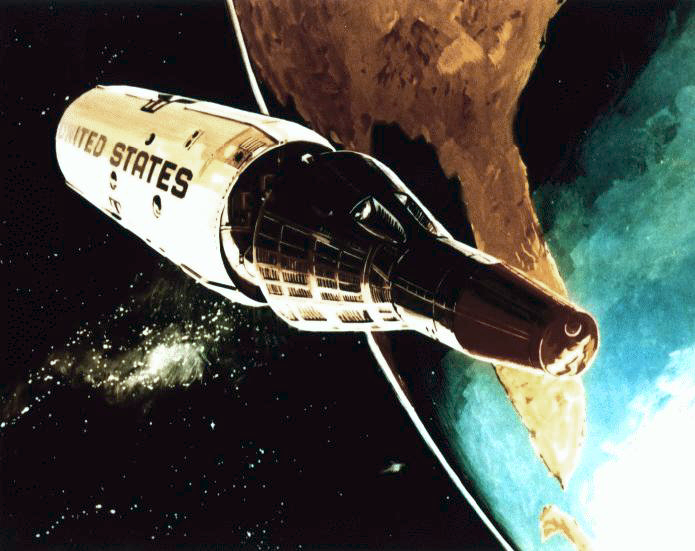Lots of exciting stuff is being spotted (or is looked for and not spotted, or is wondered about) in the vasty deeps over our heads. Read on ...
 |
| MOL (artist conception) |
By the time President Richard Nixon finally cancelled the MOL in 1969, it had gobbled up more than $1.5 billion—$10 billion in today’s dollars—and was on track to consume 17 percent of the Air Force’s annual research budget for years.
| New Horizons (ditto) |
In a few decades, surely, New Horizons will leave the solar system, just as Voyager 1 and 2 already have. Thoughts of extra-solar travel bring to mind ... extra-solar life. Aliens, that is.
It has long been asserted (as I have, too, in some fiction) that a reliable marker for exo-life is a planetary atmosphere with lots of molecular oxygen. That's because O2 is too reactive to stay free without regular replenishment. But what if life (as in a photosynthesizing biosphere) isn't the only form of O2 replenishment? Maybe there's another oxygen source: comet impacts. Europe's Rosetta probe recently discovered oxygen within Comet 67P/Churyumov-Gerasimenko. See "Why Comet Oxygen is Bad for the Search for Aliens."
But perhaps the most intriguing extra-solar observation of late was made by the Kepler space observatory. Kepler spotted odd lighting dips while monitoring star KIC 8462852, which lies about 1.5K light-years from Earth. Slight, periodic dips observed in a star's output (are understood to) denote a planet crossing the stellar disc as seen from Earth's perspective. The dips Kepler spotted are neither slight nor periodic. One speculation is that orbiting megastructures (think: Dyson swarm), built by an advanced civilization, are blocking our view of the star.
| Multiply by a billion or so ... |
To date, radio telescopes have heard nothing indicative of broadcasts from the neighborhood of KIC 8462852. (See, "No alien radio signals detected in space anomaly, SETI says." That's SETI as in the Search for Extraterrestrial Intelligence Institute.) Debris clouds from some recent astronomical mishap (such as a major asteroid strike, or a swarm of comets disrupted by a passing brown-dwarf star) seem the most likely explanation for the blocked starlight. Still, many of us can't help wondering. If you are one such, check out "What Would an Alien Megastructure Look Like? Sci-Fi Authors Weigh In."
For our final item, we'll look yet farther afield -- in space and time. Toward the beginning of this year, scientists retracted the notion they had found evidence of (a) gravity waves, and with them (2) proof of, from the very early universe, cosmic inflation. (See, for example, "Scientists abandon highly publicized claim about cosmic find.") Gravity waves, of course, are the major (the only?) outstanding prediction of General Relativity yet to be confirmed. GR being one of the fundamental theories of modern physics, astronomers keep looking. As in, "U.S. Restarts Hunt For Gravitational Waves With Advanced LIGO" (LIGO = Laser Interferometer Gravitational-Wave Observatory).
| Gravitational waves / space-time ripples (conceptual) |
And that's as far afield in space and time as I intend to venture today :-)

































No comments:
Post a Comment